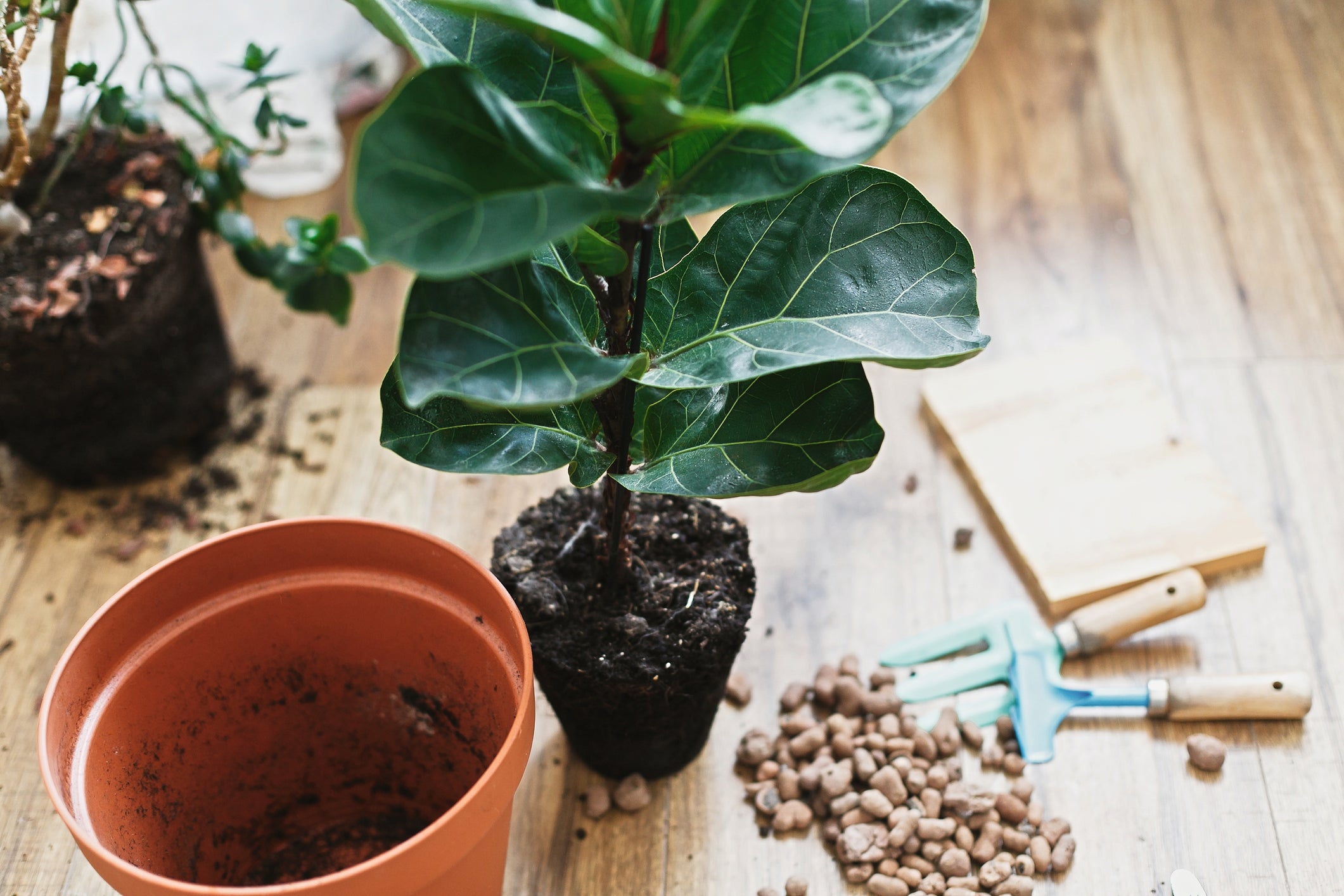How and when to repot your houseplants
The experts tell Ashley Abramson their top tips for keeping your indoor shrubs in good condition

If you want to keep a plant healthy, ensuring it has enough light and water is only part of the equation. Over time, a houseplant will outgrow its pot, and you'll need to transfer it to a new one.
Knowing when and how to do this is important for a few reasons. A larger pot allows more space for roots to expand, and additional soil adds essential nutrients to a plant’s environment. But repotting too soon can sometimes harm a plant, especially if it’s in a period of slow growth or dormancy.
Timing matters
The first time you should rehome your plant is a few weeks after bringing it into your space, said Maryah Greene, a New York-based plant expert and stylist. Many stores sell houseplants in plastic nursery pots, which aren’t ideal long-term environments for growth. You don’t know how old the soil is, and the containers are usually too small.
Greene suggested allowing the plant to adjust to your home environment for a couple of weeks then transferring it to a more spacious pot. “You can tell the plant’s happy in your home and ready for a new pot when it's grown one to three new leaves,” she said.
You'll also need to repot a plant when it starts outgrowing its home. Roots emerging from a pot’s drainage hole are one obvious sign that it’s time for a change. Christopher Satch, a horticultural expert in New York who runs the Plant Doctor website and works for the plant delivery service Horti, said the pot should generally be one-third of the plant's total height from the ground level. If the plant itself makes up more than two-thirds of the height, it's time to repot. Not all plants grow taller; some grow fuller or longer (think trailing varieties). The same rule applies, though: consider repotting whenever the plant seems to outgrow its home, Greene said.
The plants that were selected to become houseplants are versatile, so they don’t need fancy soil to grow
Water pooling on top of the soil is another sign a plant needs repotting, because cramped plants may not absorb as much water if there's not enough soil, said Matt Aulton, co-founder of the plant delivery service Plant Proper. Plants that have outgrown their pots also may drop larger, older leaves each time a new leaf sprouts. “It’s like survival of the fittest,” Greene said.
In general, Aulton said, you can expect to repot a growing plant about once a year. Some plants grow faster than others, Greene said, including monstera deliciosa, pothos and philodendron, so you may need to rehome them sooner. And the time of year doesn’t particularly matter, experts said; it’s more important to look for signs that an individual plant is ready for a new home. Many houseplants don’t grow as much in winter, so they may not need repotting during that time.
Choose your materials
As a rule, Greene suggested choosing a new pot that’s one to two inches larger in diameter than the current one. Many planters come in even sizes (4in or 6in, for example), so it might be easier to upgrade by 2in. Try to find a pot that has holes in the bottom, so extra water can drain out. (Too much water can cause roots to rot.) But if you find a pot you like that doesn’t have holes, you can add a layer of volcanic rock. The rocks prevent the plant from sitting in water for long periods, Greene said, and allow the roots to absorb the water as needed.
Don't worry too much about the type of soil you choose. Satch said most houseplants do just fine in store-bought potting mixes such as Miracle-Gro. “The plants that were selected to become houseplants are versatile, so they don’t need fancy soil to grow,” he said. If you want to upgrade, Greene suggested trying the brand FoxFarm, which contains ample nutrients for most plants, retains moisture well and is light enough to allow oxygen to reach plants’ roots.
How to do it
Once you have a pot and fresh soil, it’s time to transfer. If you plan to use rocks, add enough to fill the bottom quarter of the pot, then cover them with a layer of fresh soil. Otherwise, just add soil to the bottom of the pot. Satch suggested packing the bottom tightly, then adding a looser layer of soil on top to adjust the height of the plant.
Turn the plant on its side over some cloth (or go outside). As you hold the base of the pot, gently jiggle the plant out. “You want to loosen it without fighting it too much to avoid breakage,” Satch said. Get rid of as much of the old soil as possible, then use your fingers to untangle the bottom inch or two of the roots, which Satch said will stimulate the plant’s growth hormones.
Set the plant on top of the soil in the new pot, then pour new soil around it while holding it in place, packing lightly with your fingers as you pour. You know the soil is tight enough, Greene said, when you can put some weight on top and your fingers don’t disappear into the soil like quicksand.
Satch suggested leaving an inch or two between the top of the soil and the rim of the pot.
Lastly, give your newly repotted plant a good watering. Roots exposed to air can quickly dry out, Satch said.
© The Washington Post
Subscribe to Independent Premium to bookmark this article
Want to bookmark your favourite articles and stories to read or reference later? Start your Independent Premium subscription today.

Join our commenting forum
Join thought-provoking conversations, follow other Independent readers and see their replies